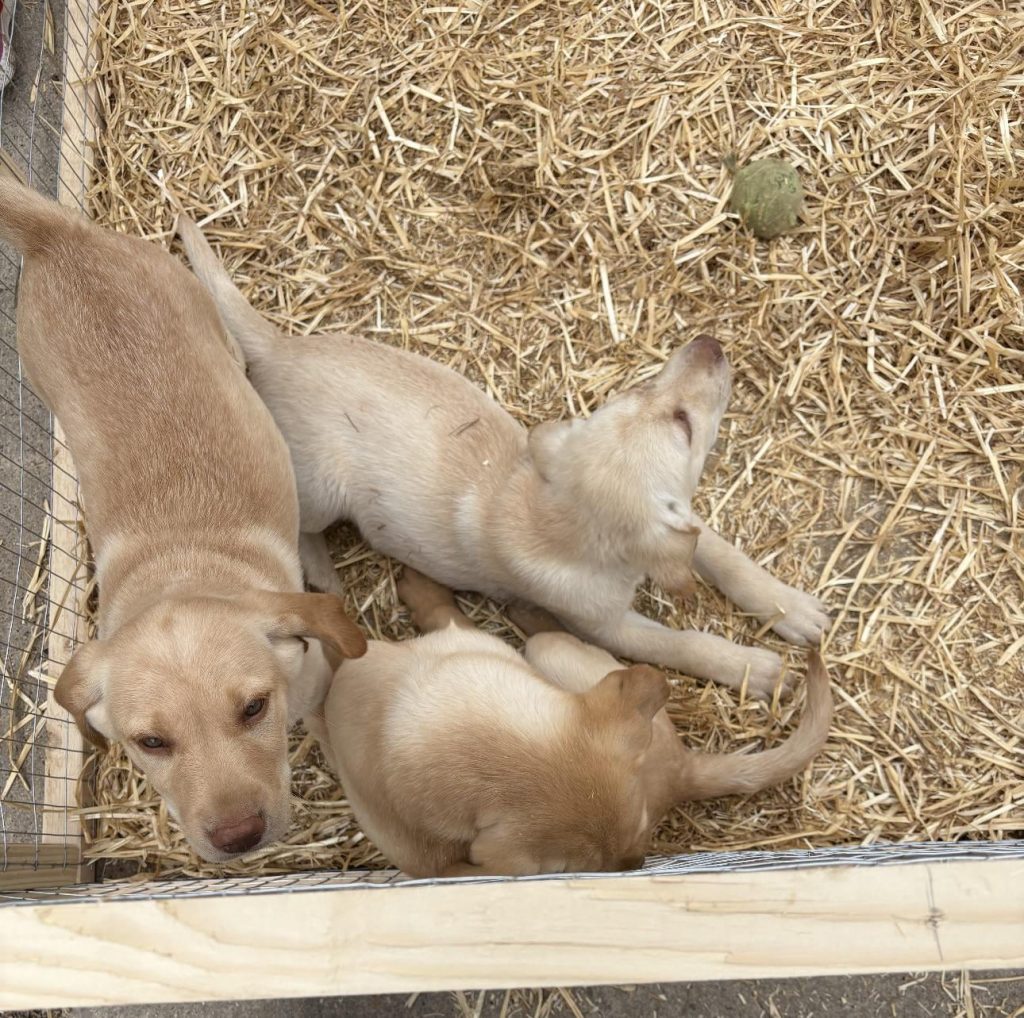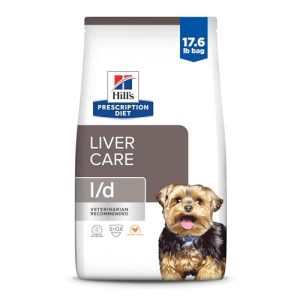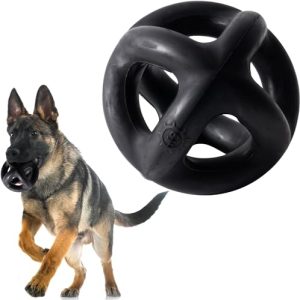Bringing a Lab puppy into your home is an exciting adventure, but it can also feel overwhelming. You want to give your new furry friend the best start possible.
That’s where these Tips Lab Puppy come in. They are designed to help you understand your puppy’s needs, build a strong bond, and avoid common mistakes. Keep reading, and you’ll discover simple, effective ways to make your life easier and your puppy happier.
Your journey to becoming the best Lab puppy parent starts right here.

Credit: www.reddit.com
Choosing The Right Puppy
Choosing a Labrador puppy is an exciting moment. It is important to pick a healthy and happy dog. This guide helps you find the right puppy for your home.
Look carefully at health signs and personality traits. These factors will affect your puppy’s life and your bond with it.
Selecting A Healthy Lab
A healthy Labrador puppy shows energy and clear eyes. Check the coat, ears, and nose for cleanliness. Avoid puppies with cough or runny eyes.
- Bright, clear eyes
- Clean ears without smell
- Shiny, soft coat
- Normal breathing without cough
- Good appetite and playful behavior
Temperament Traits To Look For
Temperament shapes how your puppy acts. Labs are known for being friendly and smart. Watch how the puppy reacts to people and toys.
| Trait | What to Notice | Why It Matters |
| Friendliness | Wagging tail, seeks attention | Good with family and guests |
| Curiosity | Explores new things eagerly | Shows intelligence and confidence |
| Calmness | Not overly nervous or jumpy | Easier to train and live with |
| Playfulness | Enjoys games and toys | Important for bonding and exercise |

Credit: www.smokymtnlabrador.com
Setting Up A Safe Space
Setting up a safe space helps your puppy feel calm and secure. It also keeps your home tidy and protects your puppy from harm.
A safe space is a small area where your puppy can rest and relax. You can use a crate or a quiet corner in your home.
Creating A Comfortable Crate
Choose a crate that is big enough for your puppy to stand, turn, and lie down. Add soft bedding to make it cozy.
Place toys and chew items inside the crate. This will keep your puppy entertained and relaxed.
- Pick a crate with good ventilation
- Use soft blankets or puppy beds
- Keep the crate in a quiet, safe spot
- Include safe chew toys
Puppy-proofing Your Home
Remove anything dangerous or valuable from your puppy’s reach. This keeps your puppy safe and saves your belongings.
Cover electrical cords and block off small spaces where your puppy can get stuck. Check for toxic plants or foods nearby.
- Hide or cover electrical cords
- Remove small objects that can be swallowed
- Keep cleaning supplies out of reach
- Block off stairways and tight spaces
- Check plants for toxicity
Basic Obedience Commands
Teaching your puppy basic obedience commands helps build good behavior. It also strengthens the bond between you and your dog.
Start training early with simple commands. Consistency and patience are key to success.
Teaching Sit And Stay
The “Sit” command is one of the easiest for puppies to learn. It helps control your dog in many situations.
“Stay” teaches your puppy to remain in one place until you give another command. This is useful for safety and calm behavior.
- Hold a treat close to your puppy’s nose.
- Move the treat up, causing your puppy to sit.
- Say “Sit” as the puppy sits down.
- Give the treat and praise.
- For “Stay,” ask your puppy to sit first.
- Show your palm and say “Stay.”
- Take a few steps back, then return and reward.
- Increase distance and time gradually.
Introducing Come And Heel
“Come” is a recall command that calls your puppy to you. It keeps your dog safe from harm or danger.
“Heel” teaches your puppy to walk beside you calmly. It helps control your dog during walks.
- Use a leash to keep control during training.
- Say “Come” in a happy tone while crouching.
- When your puppy comes, reward with a treat and praise.
- For “Heel,” start walking with your puppy at your side.
- Say “Heel” and keep treats near your knee.
- Reward your puppy for staying close while walking.
- Practice short sessions often.

Credit: www.reddit.com
House Training Tips
House training your puppy takes patience and care. It helps your puppy learn where to go.
Creating good habits early makes life easier for both of you. Follow simple steps to guide your puppy.
Establishing A Routine
Puppies learn best with a clear daily schedule. Take your puppy outside often to the same spot.
- Take your puppy out first thing in the morning.
- Bring them outside after meals and naps.
- Use the same words for bathroom breaks.
- Give praise or treats after they go outside.
- Keep feeding times consistent.
- Limit water before bedtime.
Handling Accidents Calmly
Accidents happen during training. Stay calm and avoid punishment to keep trust strong.
| Action | Why It Helps |
| Clean messes with enzyme cleaner | Removes smell to prevent repeats |
| Ignore the accident itself | Prevents fear and confusion |
| Take puppy outside after accident | Shows proper place to go |
| Reward good bathroom behavior | Encourages learning |
Socializing Your Lab
Socializing your Labrador puppy helps them grow into a happy dog. It teaches them to be comfortable with new people and places. Early socialization can prevent fear and aggression.
Start socializing your Lab puppy as soon as they are safe to meet others. Use calm and positive experiences to build their confidence.
Meeting People And Pets
Introduce your Lab to many different people, including children and adults. Let your puppy meet other dogs in a safe setting. Watch their body language to keep interactions positive.
- Invite friends over for short visits
- Attend puppy playgroups or training classes
- Allow calm and friendly dogs to greet your puppy
- Teach children how to approach a dog gently
- Use treats to reward good behavior during meetings
Exposure To New Environments
Take your Lab puppy to different places to get them used to new sights and sounds. This helps reduce anxiety in new situations. Start with quiet areas and slowly visit busier places.
| Environment | What to Do | Why It Helps |
| Park | Walk on leash, observe other dogs | Teaches calmness near other animals |
| Pet Store | Let puppy see new smells and people | Builds confidence with new experiences |
| Car Ride | Short trips to avoid stress | Prepares puppy for travel |
| Neighborhood Walk | Explore different sidewalks and noises | Reduces fear of loud sounds |
Managing Chewing And Biting
Puppies explore the world by chewing and biting. This behavior is natural but can cause problems.
Proper training helps your Lab puppy learn what is okay to chew and what is not.
Providing Appropriate Chew Toys
Giving your puppy the right chew toys keeps them busy and protects your belongings. Chew toys also soothe teething pain.
Choose toys that are safe, durable, and sized well for your Lab puppy.
- Rubber toys are strong and gentle on teeth
- Rope toys help clean teeth and gums
- Frozen chew toys can ease teething discomfort
- Avoid small toys that can be swallowed
Redirecting Unwanted Behavior
If your Lab puppy bites or chews on the wrong things, stop the behavior calmly. Use a firm “no” or a distraction.
Offer a chew toy instead to guide their attention. Reward your puppy when they chew the right items.
- Say “no” softly but firmly when biting starts
- Give a chew toy to replace the object
- Praise your puppy for chewing toys
- Keep tempting items out of reach
Exercise And Mental Stimulation
Puppies need both exercise and mental activities to stay healthy. Exercise helps their muscles and bones grow strong.
Mental stimulation keeps their mind sharp and prevents bad behavior. It also helps puppies learn new skills.
Daily Playtime Ideas
Playtime is a great way to give your puppy exercise and fun. Simple games can keep your puppy active every day.
Try games that use running, fetching, or gentle tugging. These activities help burn energy and improve coordination.
- Throw a ball for your puppy to fetch
- Play gentle tug-of-war with a soft toy
- Hide treats and let your puppy find them
- Use a leash for short walks outside
Using Puzzle Toys
Puzzle toys challenge your puppy’s mind and keep them busy. These toys make your puppy think to get a reward.
They help reduce boredom and encourage problem-solving skills. Puzzle toys are good for mental exercise after physical play.
- Choose toys that hide treats inside
- Start with simple puzzles before harder ones
- Supervise your puppy during playtime
- Rotate toys to keep interest high
Positive Reinforcement Techniques
Positive reinforcement helps puppies learn good behavior through rewards. This method encourages them to repeat actions that earn praise or treats.
Using clear signals and timely rewards builds a strong bond between you and your puppy. It makes training fun and effective.
Using Treats Effectively
Treats motivate puppies but should be given correctly. Choose small, soft treats that your puppy can eat quickly. This keeps training fast and focused.
- Use treats only for good behavior to reinforce it.
- Keep treats small to avoid overfeeding your puppy.
- Mix high-value treats for new or difficult commands.
- Gradually reduce treats as your puppy learns the command.
- Always praise your puppy with a happy voice along with treats.
Timing And Consistency
Timing is key for your puppy to link behavior with rewards. Give the treat immediately after the desired action. This helps your puppy understand what to do.
| Timing | Why It Matters |
| Immediate Reward | Helps puppy connect treat to action |
| Consistent Commands | Prevents confusion during training |
| Regular Practice | Strengthens learned behavior |
| Short Sessions | Keeps puppy focused and happy |
Common Training Challenges
Training a Tips Lab puppy can come with some challenges. Puppies need patience and clear guidance.
Some common issues include separation anxiety and excessive barking. Understanding these problems helps you train better.
Dealing With Separation Anxiety
Separation anxiety happens when your puppy feels upset alone. They may cry, bark, or chew things.
To ease anxiety, start by leaving your puppy alone for short times. Slowly increase the time away.
- Give a favorite toy to keep them busy
- Keep departures calm and quiet
- Practice short absences daily
- Reward calm behavior when you return
Addressing Excessive Barking
Excessive barking can be hard to manage. It may happen from boredom, fear, or needing attention.
Teach your puppy when it is okay to bark and when to be quiet. Use clear commands and rewards.
- Use a firm “quiet” command
- Ignore barking for attention
- Provide enough play and exercise
- Offer toys to reduce boredom
Maintaining Training Progress
Keeping your Labrador puppy’s training on track takes time and care. Consistent effort helps your puppy learn well.
This guide covers how to keep up with training and change methods as your Lab grows.
Regular Practice Sessions
Practice training regularly to keep your puppy’s skills sharp. Short sessions work best for Labs.
- Train for 5 to 10 minutes, twice a day
- Use the same commands to avoid confusion
- End sessions on a positive note with treats or praise
- Practice in different places to build focus
- Keep sessions fun to motivate your Lab
Adjusting Techniques As Labs Grow
As your Lab gets older, change training methods to fit their new size and energy.
| Age | Training Focus | Tips |
| Puppy (0-6 months) | Basic commands | Use soft voice and small treats |
| Young Adult (6-18 months) | Advanced commands | Add longer sessions and more distractions |
| Adult (18+ months) | Maintenance and new skills | Increase exercise and challenge tasks |
Frequently Asked Questions
How Do I Train My Lab Puppy Effectively?
Start training early with consistent commands and positive reinforcement. Use treats and praise to motivate your Lab puppy. Keep sessions short and fun to maintain attention. Socialize your puppy with other dogs and people to encourage good behavior.
What Is The Best Diet For A Lab Puppy?
Feed high-quality puppy food rich in protein and essential nutrients. Offer balanced meals with appropriate portions for growth. Avoid human food and excessive treats. Consult your vet to tailor diet plans for your Lab puppy’s specific needs.
How Often Should I Exercise My Lab Puppy?
Exercise your Lab puppy daily with moderate activities like walks and playtime. Aim for 30 to 60 minutes split into multiple sessions. Avoid over-exercising to protect growing joints. Regular exercise helps prevent obesity and boosts mental health.
When Should I Start Socializing My Lab Puppy?
Begin socializing your Lab puppy as early as 3 weeks old. Introduce new environments, people, and other animals gradually. Early socialization reduces fear and aggression risks. Positive experiences during this period build confidence and good behavior.
Conclusion
Raising a lab puppy is a rewarding journey. Patience and love are key. Remember, consistency builds trust and good habits. Puppies need time to learn and grow. Use positive reinforcement to guide them. Healthy food and regular vet visits ensure a happy pup.
Socialization is crucial for a friendly dog. Playtime strengthens your bond and keeps them active. Always be patient and kind. Your lab puppy will grow into a loyal friend. Enjoy every moment of this special time. They grow up fast, so cherish these early days.
Your efforts will lead to a well-behaved companion.

Emily Barker is the founder of ChillDogLife.com, a space dedicated to helping pup parents discover the best dog products, lifestyle tips, and cozy ideas for happier homes.
A lifelong dog lover, Emily combines her passion for pets with a knack for research to share trusted recommendations on everything from toys and furniture to health and everyday care.
Her goal is simple: to make life easier, stylish, and more joyful for dogs and the people who love them.







